Laws aimed at voter suppression are ‘the worst’ since Jim Crow. How Black voter trends could be impacted.

USA TODAY’s “Seven Days of 1961” explores how sustained acts of resistance can bring about sweeping change. Throughout 1961, activists risked their lives to fight for voting rights and the integration of schools, businesses, public transit and libraries. Decades later, their work continues to shape debates over voting access, police brutality and equal rights for all.
WASHINGTON – Sixty years after civil rights activists launched voter registration drives across the South and the Voting Rights Act promised protections for all voters, stubborn gaps between Black and white voter participation persist in federal electoral contests, according to a USA TODAY analysis.
The gap shrank only a handful of times, the analysis found, such as when election changes made it easier to register to vote; Black candidates, including Barack Obama and Jesse Jackson, were on the ballot; and social justice issues became pressing national debates, as with police reform in the 2020 election.
Legal battles over redistricting and gerrymandering, as well as get-out-the-vote efforts, were also key factors in the ebb and flow of Black voter turnout, which never topped 58.5% between 1964 and 2000 during presidential elections, according to the USA TODAY review. It went as high as 70.7% for white voters during that period.
Black voter participation increased to 62% in 2012 with Obama’s second term before dropping to just below 56% in 2016 and then hitting nearly 60% in 2020, the analysis showed.
“We were voting in 2020 because it was about life and death issues like COVID, issues like what was happening with George Floyd,’’ said Melanie Campbell, president of the National Coalition on Black Civic Participation. “There was enough at stake to show up and to take our lives in our hands and show up in the middle of a pandemic.”
USA TODAY analyzed gaps in voter participation using U.S. census survey data from the 1960s through 2020. Reporters also reviewed historic census data kept by the University of Minnesota's National Historic Geographic Information System to examine congressional redistricting patterns after the passage of the 1965 Voting Rights Act.
The USA TODAY analysis comes after some Republicans challenged the integrity of the election process in 2020 and as more than 19 states this year have passed laws advocates say restrict voter access.
Many of those states are in the South, where most Black people live. For example, Georgia, where Blacks make up 32.6% of the population, adopted this year some of the nation's most restrictive elections laws.
Some of those laws, experts warn, could substantially suppress Black voter turnout, posing one of the most serious threats to civil rights in decades.
“This is the worst we’ve seen since Jim Crow,’’ said Sean Morales-Doyle, acting director of the voting rights & elections program at the Brennan Center for Justice, a nonpartisan think tank. “There was a time in this country when people were willing to more blatantly say they were going after Black voters. And now what's maybe really frightening is more and more politicians are saying the quiet part out loud again."
Local election laws shift voter turnout
Election laws have often shaped if and when Americans vote.
At the heart of many civil rights organizations’ efforts in Mississippi was to increase Black voter participation, said Robert E. Luckett, an associate history professor at Jackson State University. By the 1960s, Black people made up half the state's population, but only 6% were registered to vote, he said.
“The right to vote was crucial and really cutting the legs out from underneath Jim Crow power structure built around political disenfranchisement,’’ he said.
After the Voting Rights Act was passed to help protect against discriminatory laws that required Black voters to pass literacy tests or pay poll taxes to vote, Black Americans did not cast ballots at the same rate as white Americans.
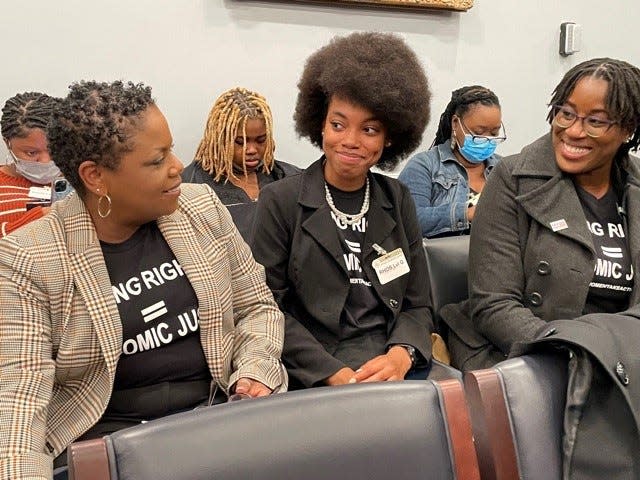
The gap between Black and white voter participation rates was the highest at 15 percentage points in 1966, the analysis found. It hovered around 12 points during much of the 1970s and fluctuated in subsequent decades.
The gap reached 5 points last year, the widest since 2006.
Gaps closed significantly in 1986, 1998, 2000, 2008 and 2012, according to the USA TODAY analysis. Experts said the bids of presidential candidates Jackson and Obama helped boost turnout among Black voters. In 2008, Black voter participation was higher than white voter participation, the USA TODAY analysis found. That also happened in 2012 when Obama ran for re-election.
“Black politics in America changed after Jackson’s two runs,” said David Bositis, a researcher on voting rights and redistricting. “After he ran, it became clear that Black voters were essential to any Democratic nomination.”
The voting gap between white and Black voters was at one of its narrowest points in 2000 at 3.3 points, the review found. The close 2000 presidential election between George W. Bush and Al Gore saw low turnout for both Black and white voters.
The election, which was marred by confusion over ballots and discrepancies in the counting of votes, ended up in the U.S. Supreme Court and led to significant changes, including more federal funds to update machines, same-day registration in some places and more early voting, including polls open on Sunday in some states.
“What happened after that had lots to do with making it easier for people to vote, correcting some of the problems, the barriers,’’ Campbell said. “That was still there over the course of that decade – up until Obama was elected.”
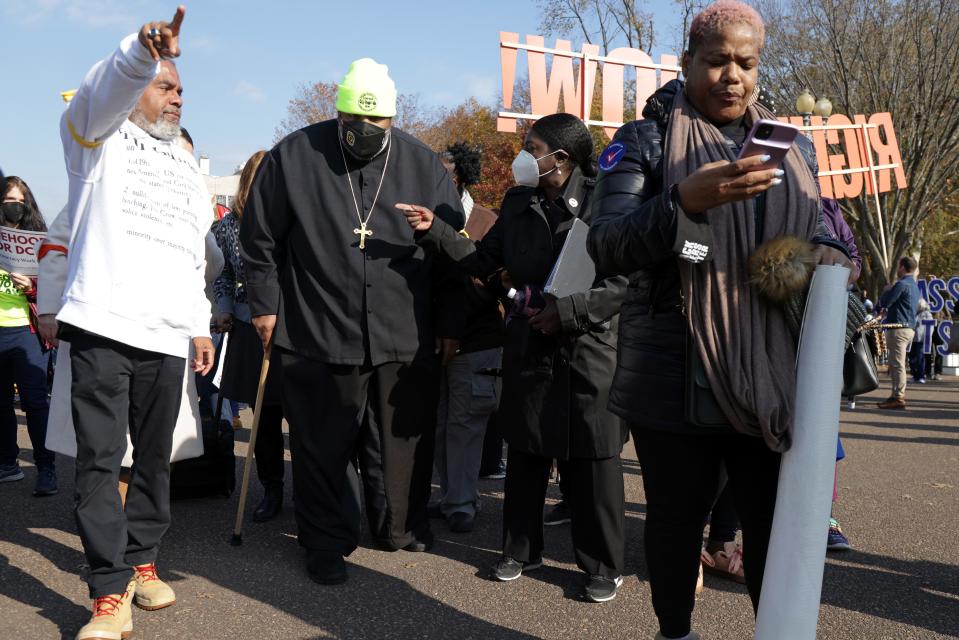
Two years after Obama’s first win, some Southern states adopted redistricting plans that created supermajority Republican legislatures and diluted the strength of Black voters, said the Rev. William Barber II, co-chair of the Poor People’s Campaign and a national voting rights advocate.
Barber said those legislatures also proposed more restrictive election laws in response to Obama’s victory, which showed he could garner support from a diverse electorate in the South.
Barber said it’s a mistake to call the recent wave of laws another tactic of Jim Crow, which primarily targeted Black Americans. He said research shows those measures could also disproportionately hurt other people of color and low-income white voters.
“This is actually Jim and Jane Crow, Esquire,'' he said. "It's not just race. It's also class and economics."
The Brennan Center tracked more than 425 bills in 49 states in the 2021 legislative session that include restrictive provisions, such as reducing early voting hours, imposing stricter ID requirements and limiting the number of mail ballot drop boxes. Republicans said the bills protect against voter fraud.
“The ways in which the laws have changed often play into the pattern that we observe in the racial disparity in registration and turnout,’’ said Peyton McCrary, a former historian in the voting section of the U.S. Department of Justice.
Many states proposed more restrictive laws soon after the U.S. Supreme Court Shelby v. Holder ruling in 2013 eliminated a key provision of the Voting Rights Act that required jurisdictions with a history of discrimination to get federal approval before making election changes.
David Becker, executive director of the nonpartisan Center for Election Innovation & Research, said some gains made after the Voting Rights Act could be at jeopardy if states succeed in limiting voter access.
“The last 50 years have been years of progress combined with some fits and starts,’’ he said. “Right now, we're in a little bit of a fit with some problematic things.”
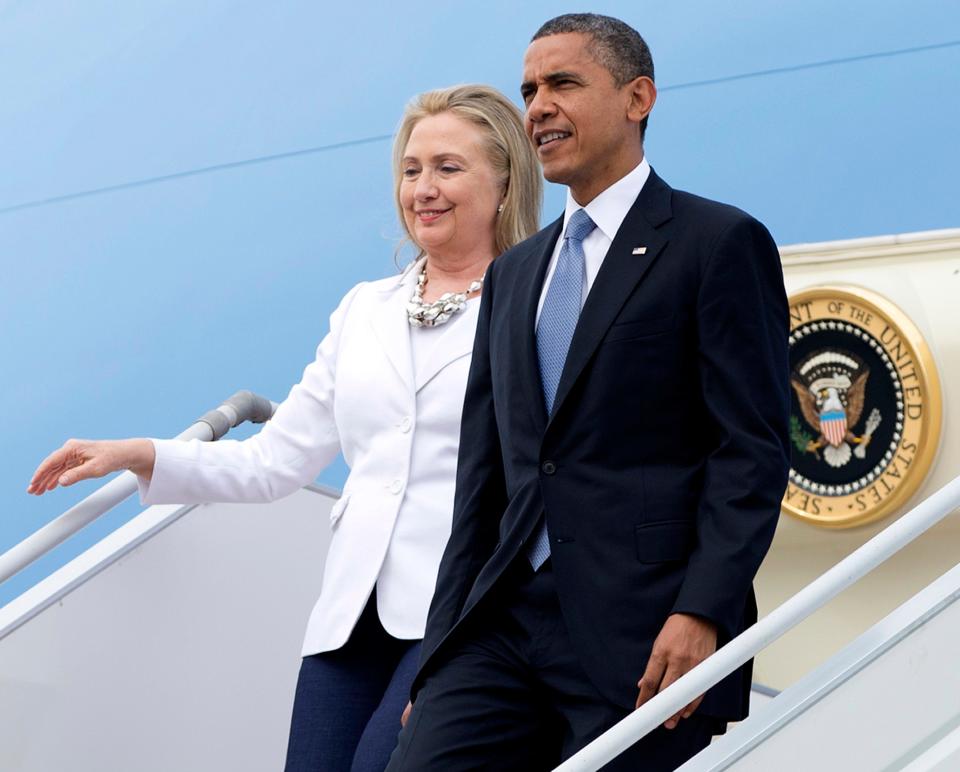
'Freedom is a constant struggle': Protesters march for voting rights on anniversary of March on Washington
‘We’ve never had so many Black candidates be so well prepared’
Experts attribute the increases in Black voter turnout in some years in part to the emergence of more Black candidates up and down the ballot, including Stacey Abrams, who narrowly lost her 2018 bid for governor in Georgia.
In Georgia, Black voter registration jumped by more than 100,000 between October 2016 and October 2020, according to the Pew Research Center.
Experts also point to historic campaigns, such as the bid of then Sen. Kamala Harris to become the first woman of African American and Asian American descent to run for vice president.
Black voters are also credited in 2018 with helping elect a record number of 54 Black lawmakers to the U.S. House. That's about 12% of representatives, roughly equal to the proportion of Black Americans.
Many Black candidates, including Democratic Reps. Lauren Underwood of Illinois and Lucy McBath of Georgia, were active in their communities and campaigned on issues important to voters, said Glynda Carr, president of Higher Heights, which works to expand Black women’s political power. Underwood, a nurse, campaigned on health care, and McBath, an activist, against gun violence.
Carr said Black voters, particularly Black women, often vote for candidates who support issues and values they care about.
“It creates enthusiasm for them to organize and prepare to vote and over-perform at the booth,’’ Carr said. “This then leads to them organizing their house, block, church, sorority and union.”
Experts said there are now more organizations, including Higher Heights, that help Black candidates, who often trail in fundraising and other advantages.
“These are the infrastructure you need to be successful because they’re going to cover: how to talk about issues, how to outreach, how to mobilize voters, and how to fundraise,” said Andrea Benjamin, an African and African American studies professor at the University of Oklahoma. “We’ve never had so many Black candidates be so well prepared.”
Adrianne Shropshire, executive director of BlackPAC, a political action committee, attributed the increase in Black voter participation during Jackson’s campaign in part to anger at President Ronald Reagan for cutting resources to Black communities. That election came at the start of the drug epidemic and the criminalization of drugs, which disproportionately impacted people of color.
“Part of the increase of Black voters is contextual and it’s not just the candidate,” Shropshire said. “Black people are looking at what is happening in this country and essentially answering the call to protect and defend the democracy.”
Black women want to be seen more as candidates, not just reliable Democratic voters
A new 'Jim Crow era': Biden, civil rights leaders slam Georgia election reform
Justice Department suing Georgia over election law it says restricts Black voters' access
‘It’s a basket of horribles’
How legislative districts are drawn can suppress or drive the Black vote, advocates and experts said. Redistricting, the redrawing of those maps, happens after each census.
With discriminatory practices banned under the 1965 Voting Rights Act, Southern states in the years following the law began configuring voting districts that diluted the Black vote, experts said.
Black voters were often spread across districts, leaving too few to elect their preferred candidate, said Bernard Fraga, a political scientist at Emory University in Atlanta.
Historic census data shows that 10 of 435 congressional districts had populations that were majority Black in 1969, but only one was located in the South, where the majority of Black people live.
“They had to find new ways, other than outright denying the vote, if they wanted to continue to make sure Black voters didn’t have political power,” Fraga said. “They were put in districts where they didn’t make up a large enough share of the population to influence who won or lost.”
In 1982, Black citizens in North Carolina challenged the state’s redistricting plan, arguing it diluted the power of Black voters. By 1983, there were 15 majority Black districts, including four in Southern states – Georgia, Maryland, Mississippi and Tennessee, the USA TODAY analysis found.
The U.S. Supreme Court ruled in 1986 in Thornburg v. Gingles that five of North Carolina’s new districts discriminated against Black voters. Experts said the ruling laid the groundwork for more majority-minority districts.
The largest gains in the South happened after the 1990 census. By 1993, the number of majority Black districts increased to 32 nationally, according to the USA TODAY review.
The increase in majority-minority districts fueled a growth in Black politicians elected to Congress, especially in the South. There were six Black congressmen in 1965 – most from Northern states. By 1993, the number increased to 41, including 21 from the South.
Some advocates worry about efforts to prevent further gains.
Last week, the Justice Department sued Texas over its redistricting plan, arguing it dilutes the votes of Black and Latino residents. Despite a growth in the number of people of color in the state, justice officials said the proposed map reduced the number of majority-minority districts.
Advocates are concerned legislatures in places like Texas and Georgia will not only use redistricting maps to dilute the strength of Black voters, but also continue to adopt restrictive election laws.
“We’re seeing that these legislators aren't going after just one thing. They're just going for everything,’’ said Marcia Johnson-Blanco, co-director of the Voting Rights Project at the Lawyers’ Committee for Civil Rights Under Law. “It’s a basket of horribles that these legislators are throwing at voters.”
The Voting Rights Act was signed 55 years ago. Black women led the movement behind it.
‘This is not a great outcome’: Supreme Court ruling brings fear of explosion in voting restrictions
Michelle Obama, Jennifer Lopez, Billie Eilish demand Congress pass voting rights bill
‘Democracy is always worth it’
Campaigns by civil rights groups to increase Black voter participation have long been underway, but advocates said ramped-up get-out-the-vote efforts have spurred more recent turnout.
Deborah Scott joined other voting rights activists last year knocking on doors in Black communities and calling Black Georgians urging them to register, pleading with them to vote. Like her predecessors, Scott believed Black voters could make a difference in pivotal elections.
“Democracy is always worth it,’’ said Scott, executive director of Georgia STAND-UP, a nonpartisan civic engagement group. “I can imagine in the ’60s what people had to experience.’’
Civil rights groups, including the NAACP, the Student Nonviolent Coordinating Committee and the Congress of Racial Equality, have played a key role in mobilizing Black voters.
In 1961, SNCC activists in southwest Georgia waged a voting registration campaign that inspired other similar movements across the South. In 1964, hundreds of activists joined the Freedom Summer effort in Mississippi to register Blacks to vote under threats of violence and murder from white law enforcement and neighbors.
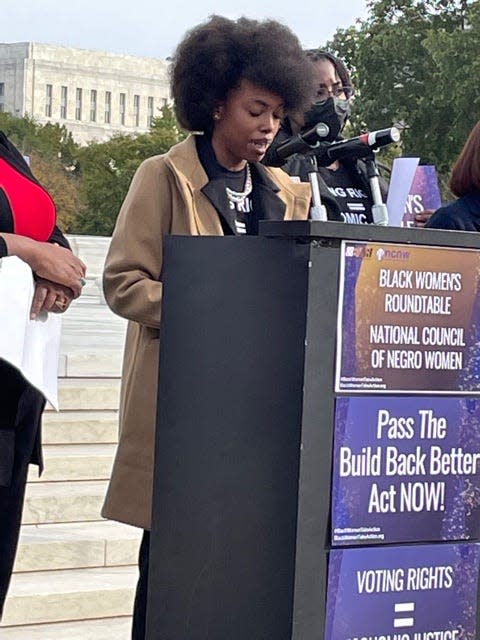
“You were literally putting your life on the line to register to vote or if you got through the gauntlet of rules, showing up at the polls was a risk,” said Johnson-Blanco.
Since then, the history of Black leaders calling on the Black community to vote in the face of adversity has persisted.
Last year, as the COVID-19 pandemic ravaged thousands of Black lives, groups, including Black Voters Matter, traveled to battleground states to urge Black people to vote. The groups set up phone banks, canvassed Black neighborhoods, tapped social media and hosted rallies.
They “have undertaken superhuman efforts to mobilize voters,’’ said McCrary, the historian.
More recently, community activists, including Scott, faith leaders and voting rights advocates, have marched to the U.S. Capitol, held news conferences in front of the Supreme Court and rallied outside the White House to press Congress to pass legislation that would expand access to voting.
The measures, including the John Lewis Voting Rights Advancement Act, have stalled in the Senate. The bill is named after the late civil rights leader from Georgia who worked with SNCC in the 1960s to register Blacks to vote. The bill would among other things restore provisions in the Voting Rights Act requiring approval for election changes.
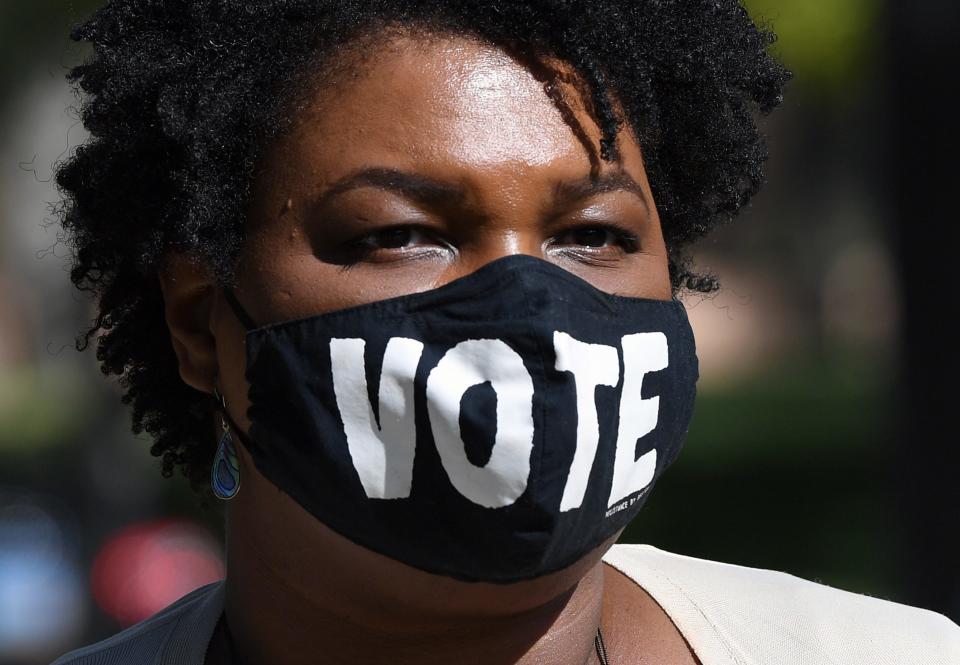
Experts said the national spotlight will once again be on Georgia next year.
Black voters in Georgia are credited with helping send two Democrats to the U.S. Senate and carrying Joe Biden, the Democrat presidential candidate, to win the conservative state.
Scott said Abrams’ bid for governor and Democratic Sen. Raphael Warnock’s reelection campaign next year will likely galvanize more Black voters.
“It puts the focus back on Georgia,” said Scott. “It’s a good thing because democracy dies in the dark.’’
Contributing: Kaitlyn Radde
Explore the series
This article originally appeared on USA TODAY: Voter suppression still driving gaps in Black and white voter turnout

 Yahoo Sports
Yahoo Sports 





